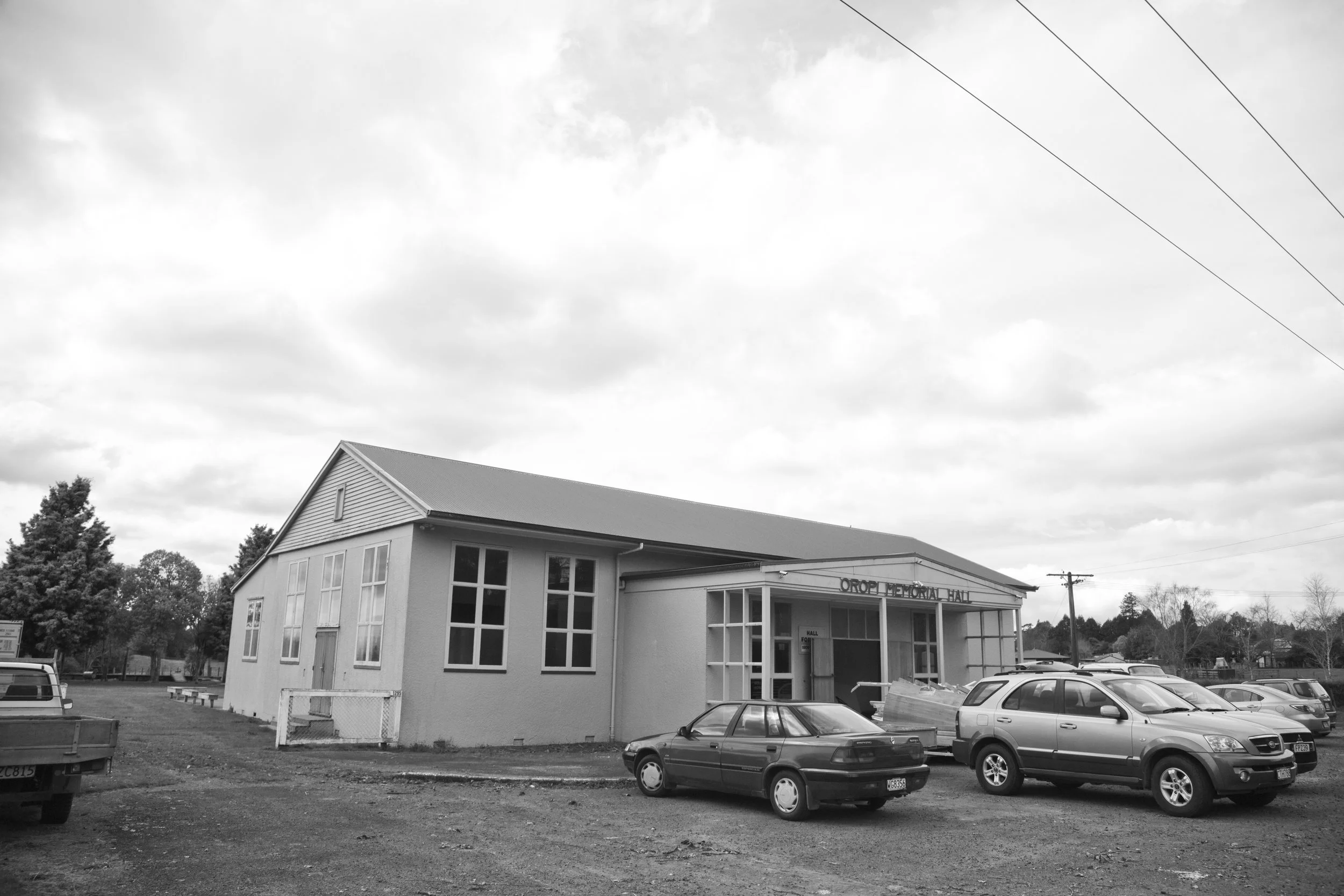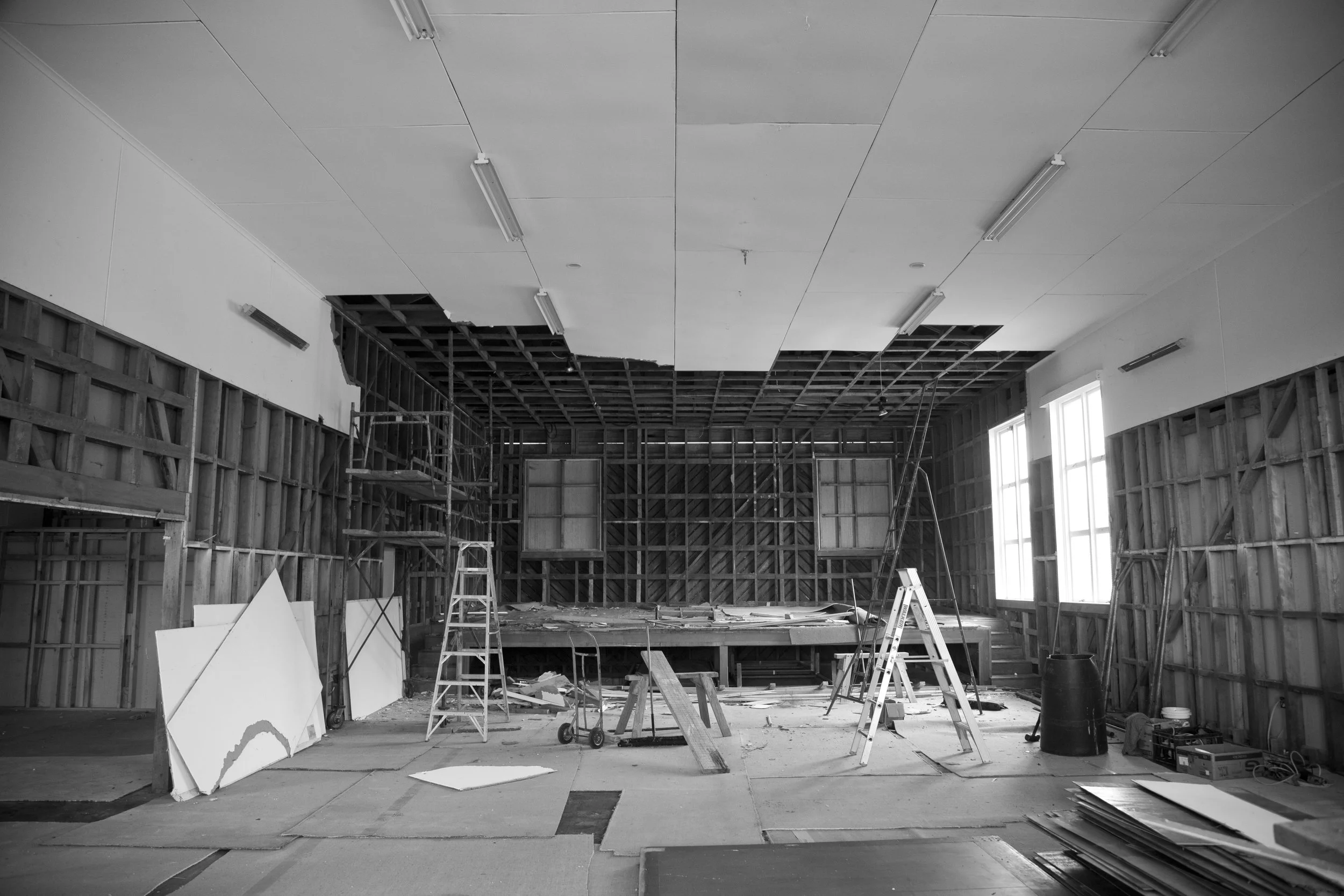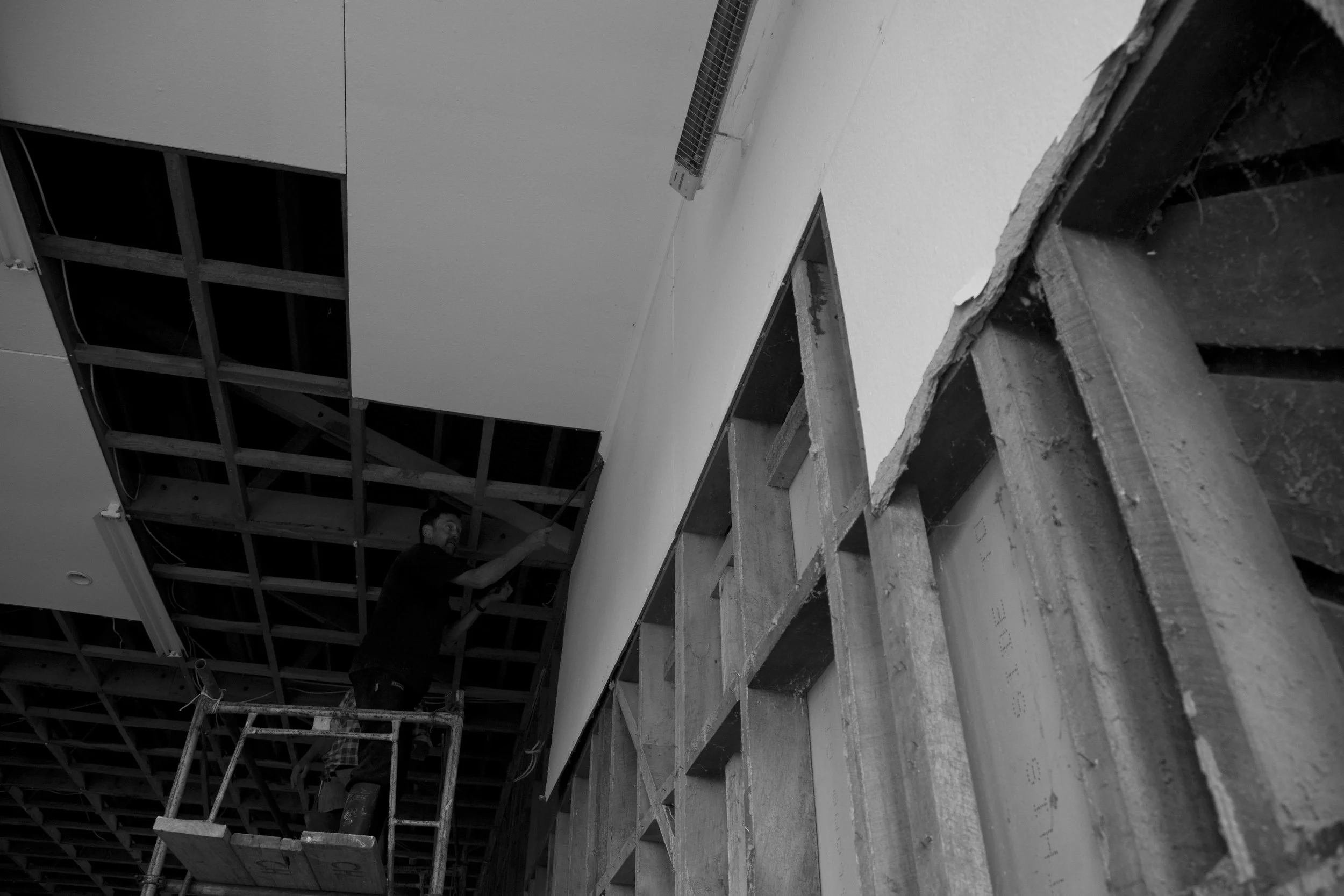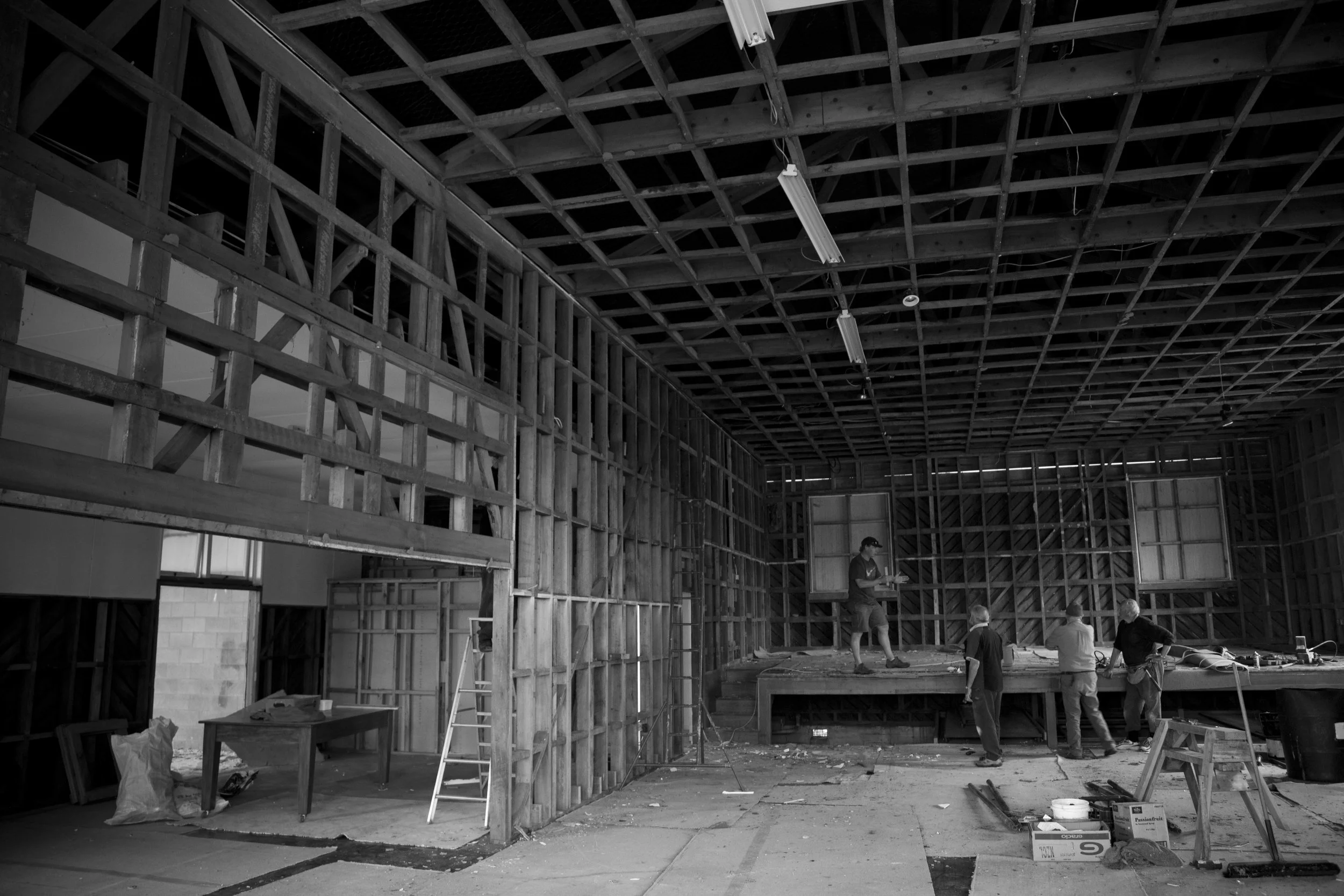The present Oropi hall is the third one on the same site. A memorial hall came about after the Second World War when the Department of Internal Affairs matched pound for pound what local communities could raise to erect a suitable war memorial such as a statue, a hall, a swimming pool or library. Mrs Eva Forsyth unveiling a memorial plaque at the hall opening in 1953. Her son colin, died in World War II. Now, as recorded in the minute book of Oropi hall committee .... The Oropi Settlers' Association decided on a new war memorial hall in Feb 1949 and an application for a subsidy was made. A Mr. Scott promised to supply logs (10,000 ft in log measurement) for the hall timber. By September 1949, Tuck & Watkins had offered to mill the timber for 12 shillings per 100 ft and that approximately 1100 ft (log measurement) had been cut and carted to the mill. The following men helped voluntarily to cut, log, and cart the timber: Messrs Douglas, Archer, Bert Seales, Knapp, Sullivan, J. Ake, P. Ake, B. Ake and H. Tuanau.
April 1950 - plans for the new hall revised and finally approved by the Dept of Internal Affairs.
Jan 1951 - Mr. Brogden asked and agreed to be placed in the erection of the new hall.
By April 1952 the old hall had been pulled down and some materials sold, and new foundations had been laid.
Mrs Margaret Chittock unveiling a memorial plaque at the hall opening in 1953. Her son Ken, died in World War II. The whole district had been canvassed and a considerable amount of money donated.
May 1952 - an auction was held to sell off roofing iron, flooring and second-hand timber.
June meeting reports that the framework is up and steps have been taken to procure subsidy.
Jan 1953 - new hall is near completion ..
Feb 1953 - date is set for the grand opening of the hall and the unveiling of the War Memorial plaques, date was Saturday 18th of April 1953.
Some statistics:
- Total cost of the hall in 1953 was 7,252 pounds, half the cost in subsidy.
- The 200 folding chairs cost 1 pound, 6 shillings and threepence each.
- Electric heaters were installed in the early 1960's.
- Storeroom and playroom were added in the 1980's.
- Toilets renovated, roof replaced, exterior and interior painted in the 1990's..
A group photo at the hall opening in 1953.
The children sitting in front had presented flowers.




























